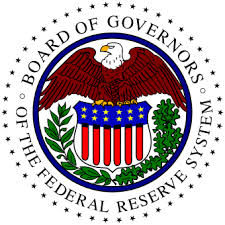Week in Review
The pivotal event of last week occurred when the US Federal Reserve concluded its monthly policy meeting last Wednesday. The central bank then announced its latest policy decisions which were subsequently followed by a press conference. In accordance with speculation, the Fed confirmed that it was cutting its influential asset purchasing program by a further $10 billion producing a new total of $35 billion per month. However, analysts were caught off-guard by additional statements advising that interest rates would be hiked at a faster pace than originally advised.
Janet Yellen, the Fed Chairperson, then endorsed these decisions by advising that these increases will be so moderate in size that rates will continue to remain low even to the end of 2016. This disclosure emphatically demonstrated that the US Central Bank was totally unmoved by recent economic data releases demonstrating that inflationary impacts were beginning to escalate. Consequently, investor confidence received a positive boost prompting them to push equities to new highs. For example, the S&P500 proceeded to surge upwards towards the end of last week by registering three consecutive days of historic intraday peaks. In fact, this leading US index recorded a sequence of six successive days of gains by achieving its longest winning period since the middle of April.
Prominent analysts summarized last week’s developments by stating that the US Federal Reserve is essentially providing a study foundation of sustained monetary easing which is helping to fuel an enduring economic recovery. However, they advised caution because such a nirvana could rapidly come to a close should a sharp dose of reality suddenly emerge and start dominating proceedings. They expounded this warning even further by stating the history clearly demonstrates that constant economic growth, primarily powered by monetary easing, is practically untenable over any extensive period of time.
What to Expect This Week
The major global nations will publish a series of important economic indicators over the coming days.
China will launch a busy week by presenting its Manufacturing PMI. A reading above 50 is predicted which should suppress concerns about the true health of the Chinese economic recovery. The Eurozone will then disclose its PMI surveys for June, which should be supportive of continuous economic growth during the second quarter of 2014. Later, the USA will issue its Existing Home Sales which is expected to confirm that this vital sector continues to improve.
On Tuesday, German will reveal its IFO business and industrial confidence index for June. Another decline is forecasted following a significant drop in May. A number of prominent members of the Bank of England (BoE) will then deliver speeches throughout the day which could provide fresh insights into when the BoE will instigate its first rate hike. The USA will finish proceeding by posting its New Home Sales which should, once again, verify a trend of continuous improvement.
The USA is scheduled to publish its Durable Goods figure on Wednesday. Although experts are predicting a decline of 0.3%, this indicator is renowned for being particularly difficult to predict with any accuracy.
Mark Carney, the Governor of the Bank of England, will present a speech on Thursday aimed specifically at cooling the housing market in the UK. If he indicates that the economy can handle such an event comfortably, then expect UK equities to rally. Japan will issue its Retail Sales number during the evening EST. If consumer confidence has fallen as a direct result of a new sales tax hike, then the Bank of Japan will have little option but to continue with further quantitative easing.
Great Britain will release its Consumer Confidence index on Friday. Analysts are forecasting a strong performance which will provide the British pound with fresh support, if confirmed. The UK will also present the final reading of its Gross Domestic Product for the first Quarter, which is expected to generate minimum market impact by registering no change. German will terminate the week by issuing its Consumer Price Index. This indicator is anticipated to demonstrate that inflation is still subdued although a slight increase would be posted as a direct result of recent oil pressures.



